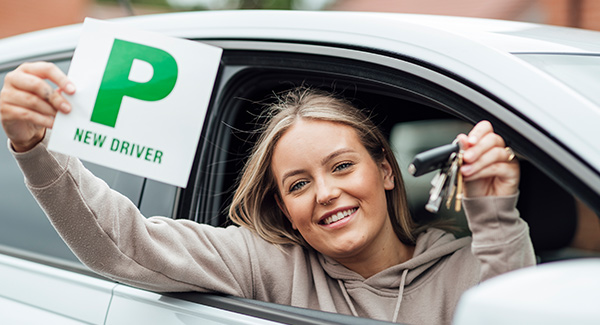What happens when you pass your driving test?
- Editorial Team
Passing your driving test gives you the freedom to drive when you want and where you want. But driving on your own for the first time can be a daunting prospect, especially as you won’t have a driving instructor by your side for guidance. You may also be unclear about what happens next, and what steps you should take so that you can drive legally and safely.
In this article, we cover everything you need to know as a new driver.
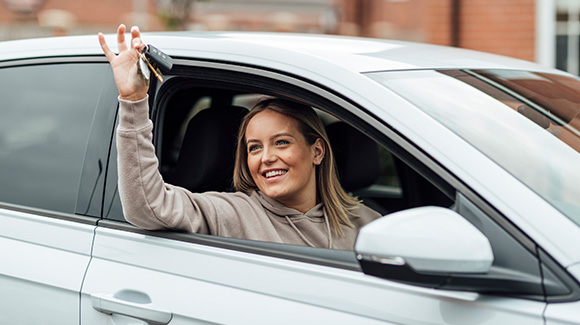
New driver points
Before you plan your first road trip, you need to be aware that new drivers are subject to a two-year probationary period.
Under the New Drivers Act, if you receive 6 or more penalty points within 2 years of passing your driving test, your driving licence will be automatically cancelled. This also includes any penalty points picked up as a learner.
So, think carefully about your driving style and make sure you always follow the rules of the road.
Getting your full driving licence
Once you’ve passed your practical driving test, you’ll need to upgrade your provisional licence to a full UK driving licence. This can usually be arranged for you by your driving test examiner who will send your provisional licence to the DVLA to be swapped for a full UK Licence.
Otherwise, you can apply for your full UK licence if you prefer to do it yourself. It may take up to three weeks to receive your full UK driving licence. But if you haven’t received it within this period, contact the DVLA.
In the meantime, you can also drive straight away, providing your vehicle meets the legal requirements.
Car insurance
Before you can drive legally, you will need valid young driver insurance in place on the vehicle you intend to drive in. Some learner driver insurance policies provide continuous cover before and after you pass your test.
But many learner policies are automatically cancelled once you pass your test. This means that you won’t be covered to drive home from the test centre. So, you will need to arrange a lift home once you pass and set up a new insurance policy as a new driver.
You will need to consider your choice of insurer and type of insurance policy carefully. Sadly, young drivers are more likely to be involved in an accident which is typically reflected in the price of their insurance premiums.
One option is to consider a black box insurance policy. This involves fitting a small black box device into your vehicle which collects data on how you drive. This data is then used by the insurer to determine how safely you drive.
Some black box policies restrict night-time driving or driving at certain times of the day, such as during rush hours. So, you will need to check what’s covered on the policy as this may affect your social life or your job if you work late.
Black box insurance can help reduce the cost of your premiums by making you more aware of how you drive. For instance, your driving speed, how you use your brakes and how you drive around corners. Safer drivers may also qualify for discounts at renewal.
If you intend to drive someone else’s vehicle, you may not be covered on the policyholder’s main motor insurance policy. But they may be able to add you to their policy as a named driver instead.
Tax your vehicle
Like car insurance, it is a legal requirement to get your car taxed before you can drive it. There are several ways you can do this. You can tax your vehicle online, contact the DVLA by phone, or pay at a local post office.
There may be certain scenarios where car tax is not required. For instance, if you own an electric car, you have declared your car off the road (SORN), or if you have a disability.
You can also check if a vehicle has up-to-date vehicle tax online.
MOT
You will also need a valid MOT certificate on your vehicle if it is more than three years old. The MOT is valid for one year and you can also check your vehicle’s MOT expiry date online.
Bear in mind that you could be fined up to £1000 if you drive a vehicle without a valid MOT.
Swap your ‘L’ plates for ‘P’ plates
When you pass your practical driving test, you can no longer display ‘L’ plates on your vehicle. You can though replace your ‘L’ plates with green probationary ‘P’ plates instead. Doing so may give you some leeway with other road users while you build up your driving experience.
Unlike ‘L’ plates, there is no legal requirement to display ‘P’ plates on your vehicle. It is optional. Furthermore, there are no time limits about how long they can be displayed on your vehicle. So, you can keep them on for as long as you feel necessary. There are also no rules about how they should be displayed on the vehicle. So, you will not incur penalties for displaying them incorrectly.
Motorway driving
Driving on the motorway as a new driver can be a daunting prospect, especially if you have not had prior experience of motorway driving during your lessons.
You may find it reassuring to know that motorways are amongst the safest types of UK roads to drive on. To build up your confidence in motorway driving, plan a few shorter trips during quieter times.
Plan your journeys in advance, so you have an idea which junctions you need to get off at, just in case your sat nav is not performing as expected.
You may prefer driving with passengers initially, while you build up your experience and confidence behind the wheel. A family member or an experienced motorist can help guide you through the experience. Avoid driving with passengers that will likely cause a distraction though. The last thing you need are passengers that encourage you to take unnecessary risks behind the wheel, such as tailgating or speeding.
See tips on motorway driving for more information.
Complete a Pass Plus course
Pass Plus is an optional driving course that new drivers can take once they pass their driving test. It provides new drivers with invaluable driving skills and practical experience in scenarios that may not have been covered during driving lessons.
The course takes at least 6 hours to complete and covers the following:
- Driving in town.
- Driving in all weather conditions.
- Driving on rural roads.
- Night-time driving.
- Dual carriageway driving.
- Motorway driving.
There is no test to take, but you will be assessed throughout the course and are expected to reach the required standard for each module.
As well as improving your confidence and helping to keep you safe on the roads, a Pass Plus qualification could also help you get cheaper car insurance.
Final thoughts
This article has provided insight into what to expect after you pass your driving test. Remember that every day is a new driving experience, and you are constantly learning to drive even after your pass your driving test.
Share this article
Table of Contents
More posts
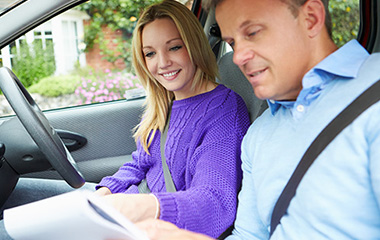
Can You Take Your Driving Test In Your Own Car | A Choice
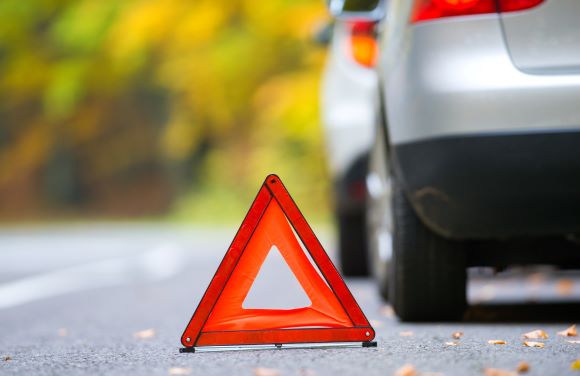
What To Do After A Car Accident | A Choice
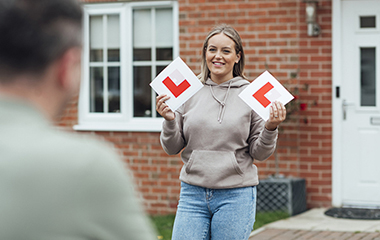
L Plates: What You Need To Know Before You Drive | A Choice
